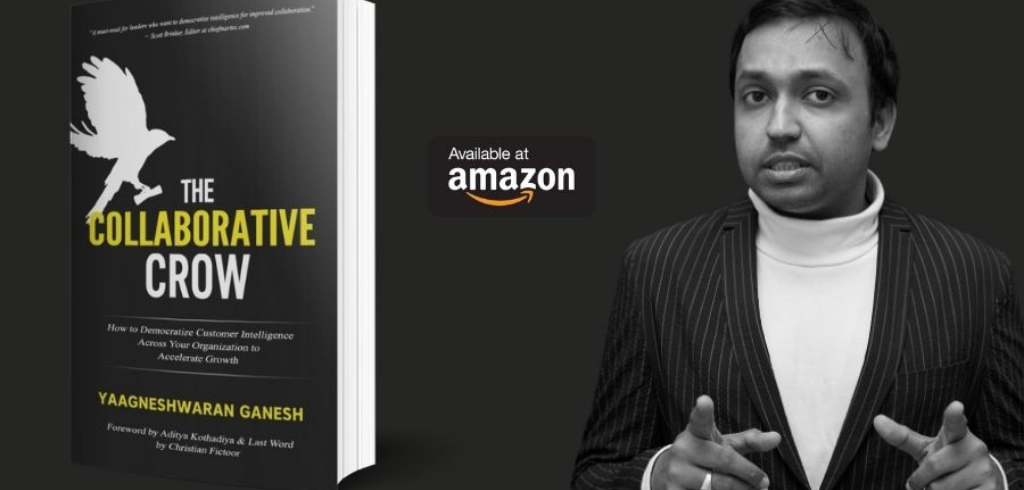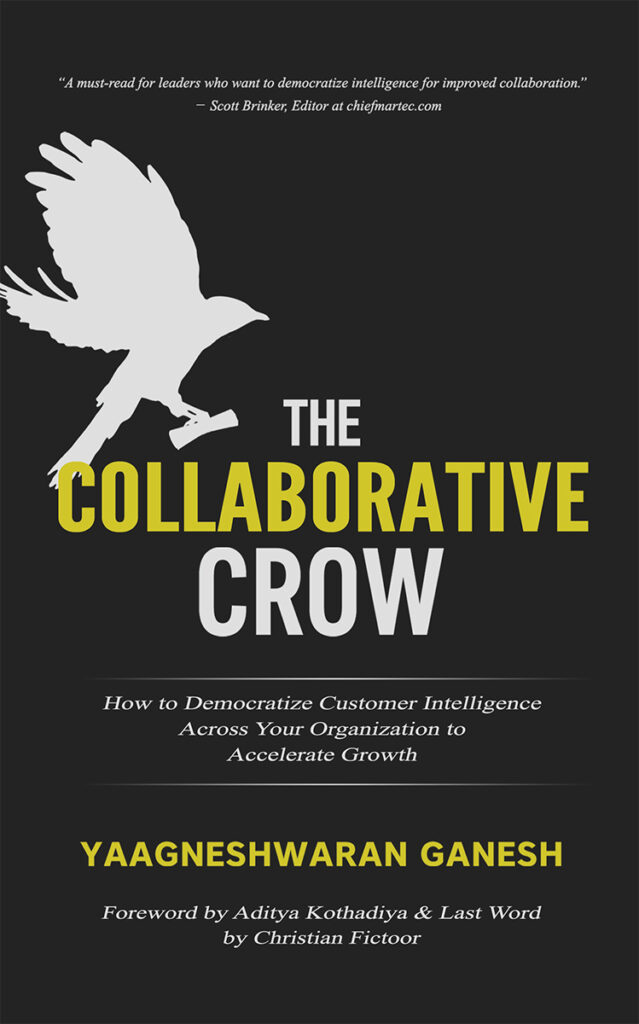Anyone who’s not been living under a rock, knows the amount of change the business world has gone through since the beginning of 2020. The shutting down of conferences and tradeshows around the world, the adaptation to remote working, the blurring lines between work and life outside of work have been some of the most visible aspects.
But what’s interesting is that it has exposed the real existing degree of collaboration within organizations more than ever before. We have always had the need for better collaboration and alignment across the organization, but as long as we worked under the same roof, the grapevine and coffee table conversations compensated to an extent, by acting as one of the informal platforms for communication and information sharing.
However, we all know that the grapevine doesn’t guarantee the authenticity of information shared, and also in most cases the information shared is layered.
The remote movement and online meetings
We have all used collaborative tools like Zoom and Slack for a long time, but ever since we all started working remotely, the call for transparency and collaboration has become louder or rather more pronounced. Why is it so?
Everyone is working in their home office, and all the non-verbal cues from in-person interactions aren’t available anymore.
Let’s look at a couple of examples.
1. Communication between colleagues
If you were part of the company before the pandemic, you have met your colleagues in person and there’s some existing relationship. You exactly understand how the person thinks or talks. But what if you have just joined an organization during the pandemic – there’s no way you understand the culture, the mindset of people in your team, etc. You are essentially operating with a blackbox.
2. Let’s say, you are a Sales Development Representative (SDR)
Chances are that you have always qualified your inbound leads by talking to them over Zoom. But, while you were at a physical workplace, you could walk up to your Account Executive (AE) and get things ironed out and be on the same page in terms of the one-off use cases that come in every now and then.
But now that pretty much every role is remote, we feel the pinch when the transparency and collaboration is not as much as we want. We realize that there’s more lip service about collaboration than what we really have.
Let’s look at what really goes wrong in online meetings.
According to Doodle’s 2019 State of Meetings Report, the cost of poorly organized meetings (including having actionable outcomes and sharing of information post meetings) in 2019 was approximately $399 billion in the US and $58 billion in the UK.
According to the report,
- 44% said that they didn’t have enough time to do their work because of too many meetings
- 43% said that unclear actions lead to confusion
- 38% pointed out that bad organization resulted in a loss of focus on projects
- 31% suggested that having irrelevant meeting attendees slowed down progress
- 26% said that inefficient processes around the online meetings weakened client/vendor/supplier relationships
The above report and findings are really interesting because it tells us two major things:
- Online meetings are necessary, but we need to have a better process around it
- There needs to be a vast improvement in the way people get actionable insights, i.e., it’s not just about the people attending these meetings, but also the ones who will be contributing to outcomes regardless of them attending the meeting.
Not all meetings are waste of time
In the US alone, approximately 55 million meetings happen every single day. And more specifically, every individual attends an average of 8-12 meetings per week. But, if we have to fix the process around meetings and improve collaboration, we need to start with the fundamental understanding of why we tend to have so many meetings on a given day.
Some of the most common online meetings are:
- Information sharing – All Hands, Weekly Team, Daily Standup, Project Status Update, Deal Review, or Customer Health Review meetings.
- Problem solving – Typically emergency meetings like customer issues, conflicting priorities, product bugs, input or direction sharing, etc.
- Approval seeking – Mostly involves presentation of an idea to a committee and the decision makers making a decision.
If you look at it, except for problem solving, the two could just be a simple email.
But what if we could really keep the meetings short and use it for:
i. Building relationships
ii. Bringing alignment and clarity
iii. Getting things done and making progress, etc
Unfortunately, things don’t happen the intended way because such pointed meetings require a lot of work for preparation, collaboration, and documentation.
Improving the way people get actionable insights
More often than not, the critical information and takeaways of an online meeting rests with the people who attended the meeting as no one takes notes most of the time. Even if it’s the case of a sales call, you rarely see people properly update the CRM with the actual detailed reason of why a deal was missed, or why a prospect chose not to buy from you, etc.
For all you know, it might go beyond the sales conversation – it could have been a product feature that someone was very particular about, or it could have been pricing, or a lot more other reasons.
Only if such information is captured properly and shared among the different functions, you’ll see more people coming up with ways to solve those problems and feed into each other.
If not, given the remote world we are operating in, the siloing might get worse.
Case study:
Here’s a story Steve Rankel, Senior Vice President, Research & Insights at Appfire, told me while he was on The ABM Conversations Podcast.
Steve goes:
I had a client of mine who was running an enterprise software company. They were the market leader in their niche, i.e., the ERP for small businesses. They were the most expensive, and unlike their competition, they didn’t believe in offering a money-back guarantee.
Once, their CEO was asked to fly to England by a large consumer products prospect, and he was expected to advise the prospect on how to set up the ERP for their new division. They flew him on British Air first class, which, as you know, is ridiculously expensive.
And once he got there and spent two days giving advice and answering questions, he was invited to the Chief Executive’s desk.
The Chief Executive told him, “The real reason you’re here is that we really can’t find the right ERP software that does what we need, for less than $2 million. So, we wanted to check you out.”
And here’s what I propose –”We want to invest in your company. We don’t want to take any equity. We were hoping you could make a half a dozen changes to the ERP platform that would work best for our business. And in exchange for that, we expect you to give us a perpetual royalty-free license forever.”
The CEO of the ERP company was surprised and suspicious about if they were just sizing him up. But then they wrote him a cheque on the spot and asked, “Now, do you think we are serious?’
And…that customer was Unilever.
Now, take a guess, how many salespeople in the ERP company knew this story? Zero.
Why is it so?
Usually, every sales conversation with a customer or prospect tends to have golden nuggets of information that a marketing team, an engineering team, and a customer success team could benefit from.
But, it lives and dies as a 1:1 conversation. No one knows about it.
As such, not many salespeople like to take out the time to update the status notes on the CRM for the accounts they handle. Therefore, expecting them to record conversations and share across the organization becomes way too utopian.
Just for a second, imagine what would happen if your teams had access to such a story?
The customer story could become your messaging and pitch. Your engineers will know why certain features matter and what they should work on. Your customer success teams could help out your customers with real understanding and empathy.
How? Alright, let’s take an engineering situation.
Does every engineer on your product development team know the next feature they need to prioritize and build? And if they know – does it come from the roadmap document or the knowledge of what’s essential for the customer (based on their own words and not assumption)?
80% of the time, people do things because it’s part of their KPI or assigned to them.
So, is it an alignment issue, or is it about lack of information?
If you are going by your objectives and KPIs, then it’s not an alignment issue. It’s a tactical issue. It is about not having enough context.
It’s about access to intelligence across the organization. We’re in that era of business where we have long moved from the information age to the age of intense collaboration, and yet access to information rests with a selected few.
And when intelligence becomes a common denominator across your organization, your prospect experiences meaningful interactions across various touchpoints, it doesn’t feel like someone’s selling something. And all of a sudden, the amount of value and authority attached to every interaction becomes game-changing.
Every function needs access to intelligence and the kind of intelligence that’s relevant to them.
How do you bring the entire organization on the same page with what’s happening with no tiers and privileges?
That is what the book ‘ The Collaborative Crow’ is all about.


And in my humble attempt to make the intelligence gathered through this book available to all –I’ve made the download on Amazon free.
Download FREE on AMAZON
While I’m not making any claims that this book is the only gold standard to building a collaborative and well-informed organization, I promise to make this book worthy of your time by keeping it simple, practical and actionable.

